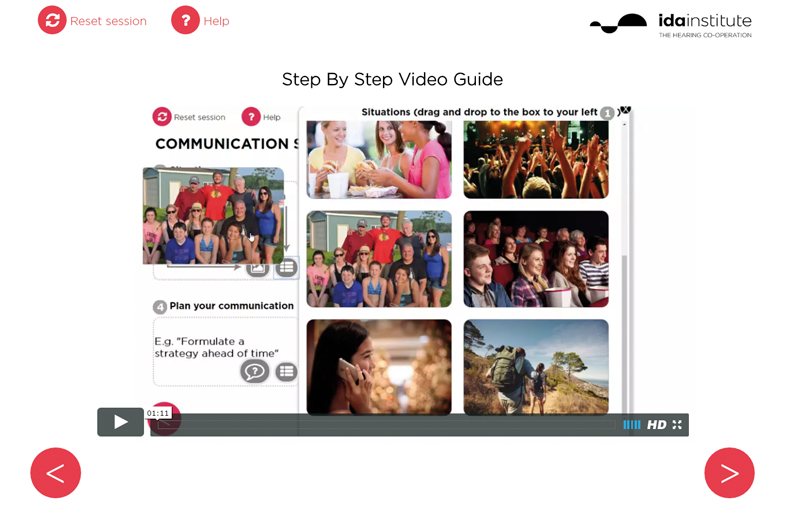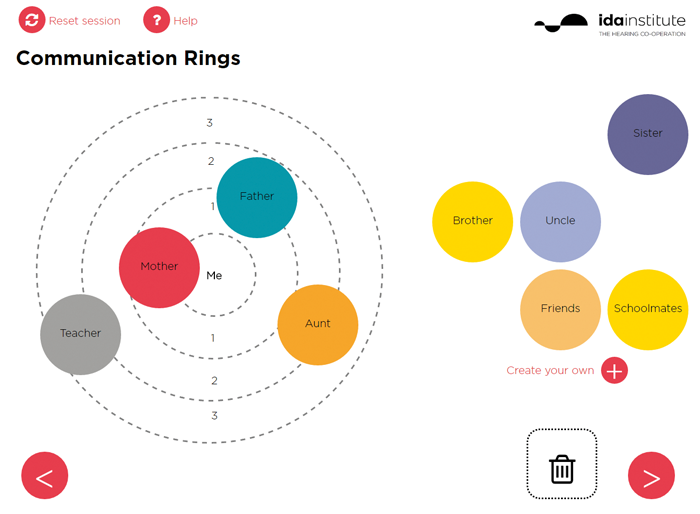In this article Ena Nielsen from the Ida Institute discusses new ways to put teens in the driver’s seat of their hearing healthcare needs.
The teenage years can be a challenging time for any young person. When hearing loss is added into the mix, teens have more to deal with than just the usual growing pains. Often they are attempting to develop the skills, knowledge and self-confidence required to self-manage their hearing healthcare. Parents, caregivers and hearing care professionals can be important sources of support in this transition to autonomy and self-management.
Empowering young people to take responsibility for their healthcare needs and to gain the confidence required to connect with the people and services that are available to help them should be a key aim of any transition planning [1].
A win-win for patient and clinician
Research indicates that transition planning can have a “positive return on investment” for both young people and healthcare providers [2]. When transition plans were used consistently, paediatric patients were more likely to comply with recommendations and understand their role in the patient-professional relationship. Most importantly, the research reported that paediatric patients who engaged in transition planning participate more actively as consumers in the adult-care system.
“Paediatric patients who engaged in transition planning participate more actively as consumers in the adult-care system.”
Researchers suggest that transition planning can also benefit clinicians who may have difficulty opening up a dialogue with uncommunicative teens. Used as a patient-centred ‘conversational springboard,’ transition planning can prompt meaningful discussion on life skills and how to acquire them, what teens know or want to learn more about, and what actions they’re ready to attempt to try.
In a separate study of young adults with chronic health conditions, researchers underscored the need for young people to be “acknowledged and valued as competent collaborators in their own transfer” to adult care – an approach that may protect them from additional health problems during a vulnerable phase as they transition to self-management [3].
Online tools and resources foster self-management
Ida Telecare for Teens is a new suite of online tools and resources that aims to help young people develop the skills and confidence needed to self-manage hearing loss as they transition to adulthood. The tools help to give teens a voice so that they can become advocates for their own hearing health. By reflecting on where they are now and where they are going next, teens can begin to think about their short and long-term goals and learn to plan the steps they will take to get there. The skills and understanding they acquire can help them develop a sense of independence and self that will sustain them as they learn to manage key decisions and life choices about their hearing health and care.
Ida Telecare for Teens consists of three tools, all designed for teens to use at home on their own or with their family as they prepare for appointments: ‘Living Well for Teens’, ‘My Turn to Talk for Teens’ and ‘Why Improve My Communication?’ including easy-to-follow videos and instructions explaining the purpose and use of the tools.
The ‘Living Well for Teens’ tool.
‘Living Well for Teens’
‘Living Well for Teens’ helps young people with hearing loss create frameworks that enable them to form a concept of their hearing loss within a variety of relevant personal, lifestyle and school-related contexts. This helps them to identify where and when it is most important for them to communicate well. By encouraging young people to think about their needs and concerns before they arrive for their appointment, ‘Living Well for Teens’ helps to prepare them for more productive and focused appointments.
“Ida Telecare for Teens is a new suite of online tools and resources that aims to help young people develop the skills and confidence needed to self-manage hearing loss as they transition to adulthood.”
The tool is easy and engaging to use. Teens select from a variety of photos featuring situations in which they might experience communication challenges. They may also choose to personalise their notes by using their own photos. They then choose strategies to manage the chosen situations and plan how they will do it and who can help. This information can be downloaded and shared with their hearing care provider at their next appointment.
The ‘My Turn to Talk for Teens’ tool.
‘My Turn to Talk for Teens’
‘My Turn to Talk for Teens’ helps teens find the most important questions to discuss with their audiologist in their next appointment. The tool is completed in two parts.
In part one, the communication rings provide a simple, visual way for teens to show the people who are part of their social network. Using drag-and-drop technology, teens place people that are part of their life into the various rings of the circle to indicate who they need to communicate with on a frequent and less frequent basis. In part two, teens complete a series of prompts including ‘I’m happy about…’, ‘I hope…’, ‘I want to talk about…’ and ‘I’m concerned about…’ to help them organise their thoughts and ensure their concerns are addressed during the appointment.
‘Why Improve My Communication?’
The third tool, ‘Why Improve My Communication?’ helps young adults think about how important it is to them to improve their communication in situations that matter to them. Teens use a selection of photos to choose scenarios in which they find it difficult to communicate. They then indicate on a line tool how important it is for them personally to communicate in each scenario selected. Teens are encouraged to consider what would happen if they did nothing or if they made a change or began to use other technology or communication strategies.
Each of the tools allows teens to download completed sessions to bring to their appointment or email in advance to assist their hearing care professional in preparing for the appointment. This enables young people to ensure that their individual needs and concerns are addressed and helps to guide the hearing care professional in discussing possible options and making recommendations for treatment and rehabilitation.
The Ida Telecare for Teens tools and resources are freely shared, as are all of the tools in the Ida Toolbox at www.idainstitute.com.
References
1. National Children’s Bureau. Spotlight Briefing: Supporting children and young people through transition [Brochure]. London; National Children’s Bureau; 2005.
2. Pajevic E, English K. Teens as Health-Care Consumers: Planned Transition and Empowerment. Audiology Today. November 2004:15-8.
3. Fegran L, Hall EO, Uhrenfeldt L, et al. Adolescents’ and young adults’ transition experiences when transferring from paediatric to adult care: a qualitative metasynthesis. International Journal of Nursing Studies 2014;51(1):123-35.
Declaration of competing interests: None declared.






